
So you don’t need to squint, the URL in the picture is:
https://naturistplace.substack.com/p/heres-a-chance-to-win-a-cruise-on
(It’s on my Substack: Revitalizing Naturism)
Let's normalize nudity

So you don’t need to squint, the URL in the picture is:
https://naturistplace.substack.com/p/heres-a-chance-to-win-a-cruise-on
(It’s on my Substack: Revitalizing Naturism)
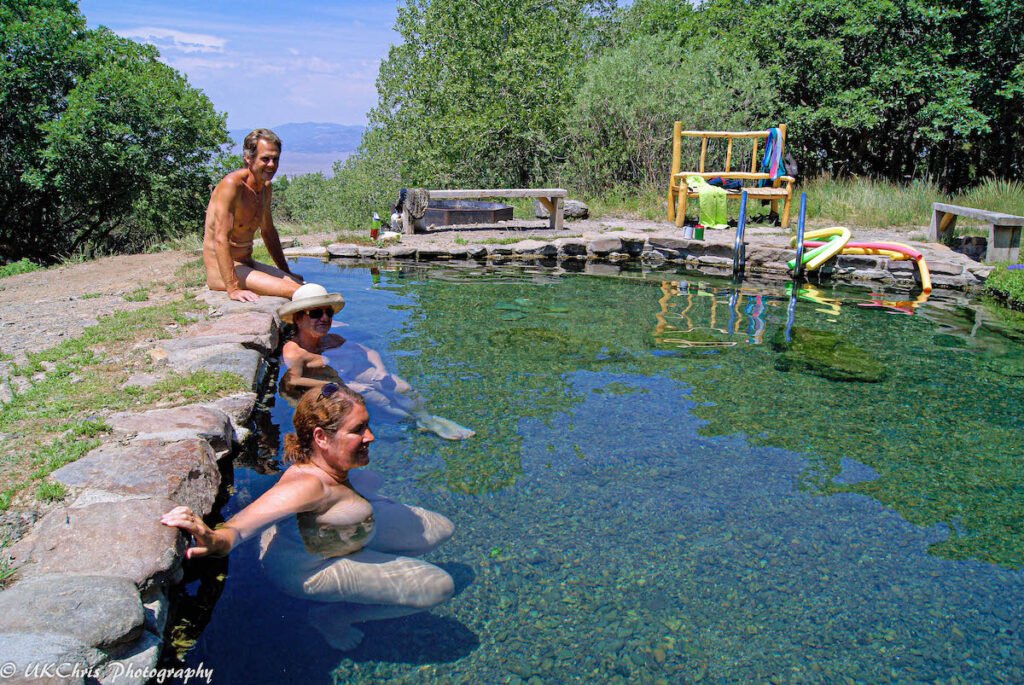
Of the places listed in this article, only one is fully clothing-optional and welcomes all naturists: Valley View Hot Springs, which is owned and operated by the Orient Land Trust. However, because of its deserved popularity with naturists and limited facilities, reservations are required for a visit. There’s more information here.
Three other places welcome all naturists, but clothing-optional use is disallowed in some pools or during certain times or days. (As a concession to non-naturists, especially those with children.) Those places are Orvis Hot Springs (more here), Strawberry Park Hot Springs (more here), and Dakota Hot Springs (more here). Note that rules are subject to change.
Two other places may be problematic for naturists. Indian Hot Springs requires suits in its main indoor pool. Other pools are either hourly rentals or inside caves and separate for men and women. Naturists may want to avoid one other place, Desert Reef Hot Springs, because of its numerous finicky policies for clothing-optional use, where non-member single, unaccompanied males are disallowed.
One other place listed is a full-fledged naturist resort, Mountain Air Ranch, which is the state’s only actual naturist resort. It was established in 1935, making it one of the oldest naturist parks in the country that’s still in operation. But it doesn’t have any natural hot springs. Here’s another article about it: Mountain Air Ranch Lays Bare the Benefits, Challenges of a Nudism Club.
Hot springs that may be clothing-optional, in order of accessibility
1. South Canyon Hot Springs – .2 mile; map
2. Piedra River Hot Springs – 3.4 miles; map
3. Rainbow Hot Springs – 10 miles; map
4. Conundrum Hot Springs – 18 miles; map
Hot springs probably not clothing-optional, in order of accessibility
1. Penny Hot Springs – 0 miles; map
2. Radium Hot Springs – 1.4 miles; map
Mountain Air Ranch, which was mentioned above, is the only naturist resort in Colorado, but it’s a very good one, having been in operation since 1935. About it this article says: “the clubhouse and pool are where most of the recreational activities take place, but there’s also an exercise room, miles of trails, an ice cream parlor, as well as the Bikini Bar and Grill.”
The only problem with it, perhaps, is that it’s located on the southern outskirts of Denver. However, most of the developed and primitive hot springs discussed above are in the western part of the state, so a trek over the mountains will be required to visit them. The most accessible developed springs is Dakota Hot Springs in Penrose, “only” 100 miles south, but on mostly good roads on the east side of the mountains.
Steves describes his spa experience in some detail. It includes an initial “industrial-strength” shower, a very hot sauna. a very vigorous massage, a series of mixed-gender soaking pools, and concludes in a “quiet room” for deep relaxation. All while entirely naked. Even up-tight Americans present can realize that any kind of bathing attire would be entirely superfluous. After all, everyone is preoccupied with their own sensations rather than anyone else’s naked body. Wearing anything when bathing alone would make no sense. And that’s just the same in this context, despite the presence of others.
Anyone who hasn’t tried naturism, but isn’t “offended” by others’ nudity – such as at clothing-optional beaches – should consider visiting an actual naturist resort that welcomes RVs. That’s a great way to learn about naturism in a very safe environment. If you’re already a naturist, invite other RVers you know to go with you to a naturist RV resort. They might discover being pleasantly surprised to enjoy “the opportunity to exit [their] RV without any clothes on.” And why not? After all, people there usually aren’t wearing anything.
Most clothing-optional RV resorts aren’t strictly for RVers. Instead, they also welcome anyone who enjoys nonsexual social nudity – day visitors, tent campers, van campers, or vacationers staying at indoor accommodations. Many consider themselves naturists or nudists. But some just like being naked, and that’s fine, as long as traditional naturist norms are respected (i.e. no open sexuality).
The article here gives many more details about what naturist RV resorts are like, although there’s plenty of diversity. But if you’ve visited some or many RV resorts, the only thing different about the naturist ones is that you don’t need to wear anything unless you want to. A naturist couple now living at Laguna del Sol, near Sacramento, California, describes their own personal experiences with it. From my own experience, it’s a great place.
Note that many places that do own land don’t necessarily have facilities for RVs. They may lack hook-ups or parking spaces for large RVs. If you do need such facilities, the list here is useful. But you can check out places that may be closer to you in the AANR directory to determine whether they’d be suitable for your needs.
Strangely, most places listed in the article are in the western half of the country (including Texas). Not surprisingly, Florida has a large number of nudist/naturist resorts, though only 3 are listed here. But there are also many places in the mid-Atlantic states, from North Carolina up to Pennsylvania. If you happen to be relatively new to naturism, you should be aware that some places have special requirements for first-time visitors. Before visiting any place for the first time, calling in advance is a very good idea. Even if they welcome first-timers, they may have special events or few unreserved spots for large RVs, so making a reservation is also a good idea.

Sian, one of the 2000, says “there is a uniquely liberating high in group nudity”. Why would anybody who’s not stoned on some illegal substance do such a thing? She later explains “we’re free and doing something silly in the name of art and something primal none of us could name.” Naturists actually understand pretty well from personal experience. Most, however, would prefer having the experience under more temperate conditions.
People use various faulty excuses for balking at being fully naked unless they must be. One very common concern is the appearance of their naked body. Cultural “beauty” standards are at the root of this. Is one’s body too fat or too thin? Are some parts out of the “right” proportion with other parts? Are there too many wrinkles, scars, stretch marks, or other imperfections? Does one’s body simply not look as “good” as it seemed at an earlier age? These issues affect how people feel about their own bodies and how they think others will judge them.
The article here suggests how to alleviate such concerns by taking four specific steps.
However, at least a decade later, her boyfriend was talking about how he modeled naked for a college newspaper article. He and other friends had also bragged about adventures like skiing and mountain biking naked, and the writer admired them for being “less inhibited, so comfortable in their own skin.” So allowing irrational fears of nudity to be in control seemed wrong, and she resolved to become “one of those naked people”.
It needn’t happen overnight. For most people, becoming comfortable going naked openly may best be done gradually. “A lifetime of prudishness would not be undone overnight.” So, with her boyfriend, it was agreed that “I should design a training plan of sorts, progressing from a beginner-level warm-up (bathe in a nude hot spring?) to some intermediate challenge (wander around unclad at a clothing-optional resort?) and eventually to a graduation exercise (a naked ski or bike ride?). I would become one of those people I had always admired. I would become someone who does naked stuff outside.”
Bonus from earlier:
How To Feel Comfortable Naked Every Day (6/26/16)
A couple of the articles above address getting used to allowing other people, who may be complete strangers, to see you naked. There are many ways to enjoy naturism – camping, hiking, exploring hot springs, visiting naturist resorts, or simply being naked at home. But you won’t be able to enjoy any of that unless you overcome fears of being seen with nothing on.
If you’re naked around friends or relatives there’s not much to be concerned about – provided they’re willing to accept your nudity. Getting used to you wearing nothing may take time, but they’ll come around soon enough if they respect you and you explain your reasons for being naked. Being naked around strangers needn’t be any different, assuming they expect to see nudity, such as in an art class with nude model(s), in a naked yoga class, or at a nude beach. (Obviously, going naked is risky anywhere nudity isn’t expected, although nudity may be legal and possibly OK in little-used hiking and camping places.)
[Tip 1: If someone you know is uncomfortable with your nudity, try wearing just the minimum they can accept. Before long they may relent and decide you needn’t bother wearing anything.]
[Tip 2: Invite the uncomfortable person to accompany you somewhere nudity is acceptable, such as an art class or nude beach. If your nudity’s OK there, why not somewhere more private?]
Two points from this article are worth noting if you’re the one who wants to be comfortable naked. First, you should fully accept your body just as it is. While “improving” it sometimes is possible, or even worthwhile for health reasons, that’s usually difficult and takes time. But if you want to enjoy nudity, don’t put off accepting your body as it is right now.
Second, the best way to do that is to be naked as much of the time as is physically comfortable while you’re alone or with people who won’t mind. Be naked for an hour or more every day that’s possible. And don’t be afraid to look at your naked body in a mirror. Once you’ve been naked for an hour a few times, why stop without a good reason? As the article says, “You may feel uncomfortable at first (or you may love it!), either way step outside your comfort zone and challenge yourself to bare your body to the world.”
[If you’re already comfortable being naked, offer the advice above to others you know who might be interested. The world desperately needs more naked people.]
The present article makes little connection between body acceptance and naturism. However, the 6 individuals featured in the article did allow their fully nude photos to be published and clearly expressed their varied perspectives. The most common body insecurity problem probably has to do with weight. But there are a number of other issues. One of those, especially relevant for women, has to do with body hair. There’s a social convention that body hair on a woman (other than on her head) is a problem. But Emma felt differently, observing that “the more authentic I am, the better it is for me”. And further, “I wanted to just be able to be me and focus on my personality.” That’s a healthy attitude, which is certainly relevant for most naturists.
According to the article, during one year, Australian photographer Ponch Hawkes (a 75-year-old woman) “has shot more than 400 nude women over 50 to fix a pervasive problem.” The problem: “We don’t know what the bodies of older women actually look like.” It’s especially a problem in the eyes of many younger people who might be interested in naturism, since (at least in the U.S.) so many active naturists who visit naturist parks – men as well as women – have passed the 50-year mark. So the issue of physical appearance extends to age as well as weight and other factors. Perhaps surprisingly, enough older Australian women of all body types volunteered to be photographed fully nude – considerably more than one per day. Although “Some women came prepared to be naked… Others hadn’t taken their clothes off in front of anyone for years.”
In the present article, Alexis makes a different yet simple case for naturism’s mental health benefits. If (and only if) you really enjoy being naked, as most naturists do, then your mental state will improve while you’re naked simply because you’re doing something pleasurable. And there’s no reason to feel any guilt about that. In the rest of the article, Alexis offers ideas for increasing the amount of time you can spend naked. (Disclaimer: Alexis included a couple of positive links to posts on this blog. Thanks, Alexis.)
Briitish naturist Beatrice Berry is quoted explaining how the freedom to be naked compensated for loss of other freedoms during the lockdowns. Another British naturist, Stephanie McManus, founded Body Freedom International during the pandemic to focus “on the discovery of nudity as an internal transformation tool for body acceptance, freedom, and confidence.” The article concludes with advice on getting started with naturism. It’s a good article to share with others who wonder why you like being naked.
The article reports how a long-time British naturist, Chris, overcame stress and anxiety late in 2020 by stripping off in the local woods, despite the chilly ambiance. Chris was accompanied by his partner, Ginny, but though she’d become a naturist more recently, she kept her clothes on. However, she explained, “It was so nice to see him enjoying himself again, after he’d had a couple of panic attacks.” Ginny, a photographer, was carrying her camera and documented Chris’ experience.
Since many people confined at home were quite far from retirement age, lots of young adults became adherents of naturism. And since they could be naked at home as much as they wanted, there was no impact on their careers. One of them is quoted, saying “There are many more of us younger generation naturists out there than is outwardly obvious.” The WFH (work-from-home) trend should be a boon for naturism.
They visited the VanTan Club, which was founded in 1939 and is Canada’s oldest naturist club. He got more than just a better understanding of naturism and its appeal. According to the article, “As Berish and his colleague interviewed the folks at Van Tan, they realized that to truly understand the naturalist [sic] perspective, they would have to take it to the next level.” In Berish’s own words, “We’re excited to be able to share their story, and we knew that in order to do that, we were going to have to, you know, get naked as well… I reluctantly decided to jump in. And once I did, it was great.”
In this article, Linda Weber (an activist in several naturist organizations) provides 10 pieces of practical advice, which are mainly intended for naturists who have little personal experience with gardening – but who’d like to add a new hobby they can enjoy naked.
Kendal admitted that “she also loves to be in the buff among her plants, but can’t always embrace her hobby fully” due to inadequate privacy from neighbors. She insisted, however, that naked gardening helped “connecting with myself and integrated my body and myself with nature.” During the episode, “the two women looked perfectly comfortable in their own skin.”
Bonus from earlier:
Is Naturism the solution to low body confidence? (1/27/20)
Just before the first waves of Covid-19 crashed on British shores, final-year journalist student Stephanie Silom went to a 60s-themed event at a hotel in Bournemouth, UK, hosted by British Naturism. According to her article, she “discovered that Naturism may be the answer to the age old problem of how we can improve our body confidence.” (Why don’t U.S. naturist organizations do this sort of event at regular hotels with quality accommodations? Never mind. What was I thinking?) Much of the article quotes BN spokespersons.
However, Stephanie concludes:
“Naturism gives people the opportunity to see a huge variety of healthy body types in a safe, respectful, asexual environment. Millions of people have been converted to the Naturist lifestyle after discovering the joys of feeling fresh air on their bare skin, feeling more relaxed and less self-conscious as a result.
Naturism opens people’s eyes to the reality and beauty of the human body; our body confidence and the extent to which we base our self-worth on our bodies improves massively once we learn that almost no-one has a ‘perfect’ body.”
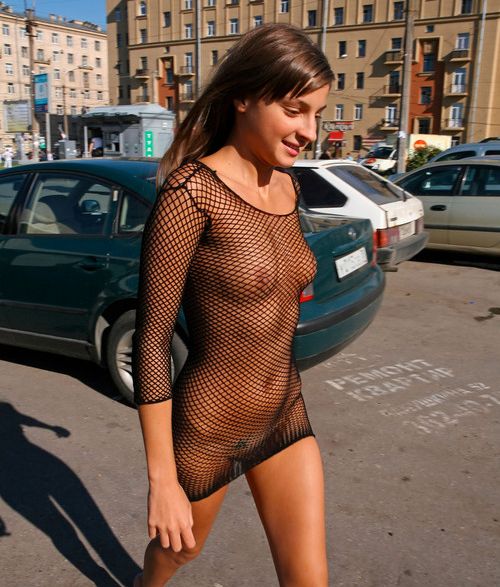
About this “new naked dressing” the article’s writer maintains that “exposure does not equate to vulnerability but strength and that the body just as it is is just fine.” As naturists will wholeheartedly agree. “The point of the new nakedness,” yet another source observes, “is not to provide that sort of viewing pleasure [for others] but rather a form of self-pleasure.”
Certain women may choose to wear something that exposes just a bit short of everything. Such minimal clothing is merely decoration – like tattoos, jewelry, or other accessories that conceal little. Women at naturist places, in fact, often make a similar choice – and that’s fine. What’s the reason? It’s about “control of identity”. In many contexts, such as business and professional settings, women traditionally have much more freedom of choice than men about the colors, styles, etc. of what they wear. So selecting one of these “almost but not entirely naked” fashions to make a unique statement of who they are is understandable. (Supposedly, some women are upset if another woman present is wearing a nearly identical outfit, as that could suggest it was mass-produced in some Asian sweatshop and there’s nothing special about it.)
But before you get carried away with thinking there might be a trend toward wearing a “bare” minimum, consider the reality. It’s a “trend” only for relatively few women. This is “fashion” or “style” in limited circumstances, such as social occasions where distinctiveness matters. You won’t see anything like this while shopping at Walmart.
An effective plan to promote naturism needs to include a bottom-up approach. That would mean encouraging people who are already enthusiastic naturists to explain what is so great about naturism to open-minded friends – along with an invitation to try it themselves with someone they respect and trust. This is a “grassroots” strategy that can be effective if millions of current naturists are encouraged to do what they can to promote naturism.
And it’s way past time for AANR to ditch the terms “nudism” and “nudist”. They’re really outdated, as well as having risible connotations to most people. The terms “naturism” and “naturist” are what’s used in reference to social nudity in most countries other than the U.S. Disagree? Well, think about how chosen terminology affects other people, rather than what you might personally prefer.
Simply as an overview of early naturism in Britain, apart from photography, there are a few interesting details. One is the point that early naturism in Britain (as well as Germany and France) was meant to be a lifestyle that promoted healthy living, physical fitness, and the body type that would result. For better or worse, naturists now emphasize that “all bodies are good bodies”. Another interesting detail is that “By the end of the 1930s, nudist membership was at an all-time high in Britain, with around 40,000 members.” That compares very favorably with the peak membership of AANR in the U.S. in 2000 – around 65,000 – even though Britain’s population in 1940 was about 13% of the U.S. population in 2000.
Especially during the pandemic, BN offered its members a number of activities via Zoom – yoga and exercise sessions, online group chats, cooking lessons, etc. But before the pandemic, and now that it’s mostly abated, BN has offered a wide range of both online and in-person activities. The continuing online choices include discussion forums, blogs, book groups, and member picture galleries. The in-person activities are numerous too – organized swim sessions at local pools, regional festivals and gatherings, and events to support charities, including Great British Skinny Dips at many beaches. Neither U.S. national naturist organization offers any comparable smorgasbord of naturist activities. Even AANR’s “Bold New Plan” certainly involves nothing at all similar.
Some other findings of the recent British poll:
U.S. naturists should be so jealous.
The article placed some emphasis on how many young people in Britain have taken to naturism – so that almost half of newly active naturists in the UK were in the youngest category: 16 to 24 years of age, compared to only 6% in the 45-75 year range. (All the rest were 25 to 44.) The survey from 10 years ago found nearly an even split between the oldest and youngest groups of new naturists. Whatever the reason, BN seems to have found a way to appeal to people who may remain naturists for at least another half-century. To drive home the point, a new naturist, Katy, who’s 17, was quoted saying “A group of us went swimming in the lakes over the summer and decided on the spur of the moment, to take off our costumes. Then we just hung out afterwards, not bothering to get dressed. I realised it was so freeing.”
Despite the editorial blunder, the British reality should be very interesting for U.S. naturists, as (unfortunately) in the U.S. rather few young adults participate in naturism. Apparently, they think it’s somehow “uncool” and only for people middle-aged or older. Young British naturists thoroughly debunk that idea. It seems to be true that people who “belong” to a particular generation (“Gen Z” in this case) mostly pay attention only to what their generational peers think. That’s a good thing for naturists in Britain – but not good at all in the U.S. Precisely because of the great misconception the youngest U.S. adults avoid participation in naturism. It’s a vicious circle. C’est la vie.
Antonia, who works for the Daily Mail, was asked by her employer if she “fancied reporting from Nudefest”. “I said yes before I could change my mind, or think it through,” she replied. Her explanation: “Since stopping drinking to improve my health in January, I have tried to push my comfort boundaries, to prove that giving up alcohol need not make life dull.” Nevertheless, she still approached the experience with much trepidation, but determined not to flinch from a resolve to get naked from the start.
One of the first people she speoke with explains, “Some people think we are ridiculous, dangerous even, but the truth is that everyone who gets into this environment changes their view, because it’s so normal when everyone’s naked.” Knowing how common such negative assumptions are among non-naturists, it’s reassuring to first-timers that the truth is how normal being naked with others actually feels. Unfortunately, persuading doubters about the reality is usually difficult.
After having spoken with first-timers whose initial anxieties were like her own, Antonia reports, “The longer I’m naked for, the more normal it seems, and by the time I’m watching a naked circus performer on stage, his genitals twirling as enthusiastically as the giant hoop he’s in, I often forget I’m naked at all.” This process is exactly what’s necessary, in most cases, to persuade others that engaging in naturist activities (whether or not one starts to self-identify as a naturist) is something they need in their lives. It’s just the Confucian saying: “I hear and I forget. I see and I remember. I do and I understand.” This is why simply advertising the goodness of naturism usually doesn’t work.
Just like BN, the fledgling INA “saw its numbers swell during the pandemic. As well as beach meet-ups, they embark on naked yoga, hiking and trips overseas to parts of Europe, often to visit saunas. They also rent swimming pools and saunas in Ireland for private naturist sessions.” The Irish law on nudity is just like Britain’s: “Being naked in public is not a criminal offence, unless people are “causing alarm” to other members of the public or there is a sexual threat displayed.” And, Medina notes, “We have had very little opposition from anyone”. The organization has also had private naked tours to art galleries running exhibitions displaying naked art.
Nadine had been going to nude beaches since she “first discovered them at the age of 16, when I snuck away from my parents on a family vacation in Hawaii. I loved the freedom of being naked in the waves, and I couldn’t believe how confident I felt.” One of her reason for taking the children to a nude beach was to “help immunize them from the cultural idea that women’s bodies exist for men’s viewing pleasure.” She believes that “mainstream media gives women a dangerously narrow definition of what is beautiful. I was much more terrified that my children would internalize an unrealistic image of women’s bodies”.
She says her “kids loved their first experience at the naked beach. They were comfortable, confident, and it really demystified nudity. Every summer after that they visited the naked beach. They’re all now adults. Each of them “has had their own relationship with nudity over the years. Sometimes they went completely naked, other times they stayed clothed, honoring their personal comfort as they moved through life stages.” If only many more mothers were like Nadine there would be far fewer women who are overly anxious about their bodies – and unable to even understand naturism and what’s so great about it.
Bonus from earlier: You Should Get Naked More Often. It’s Good for You. (7/21/16)
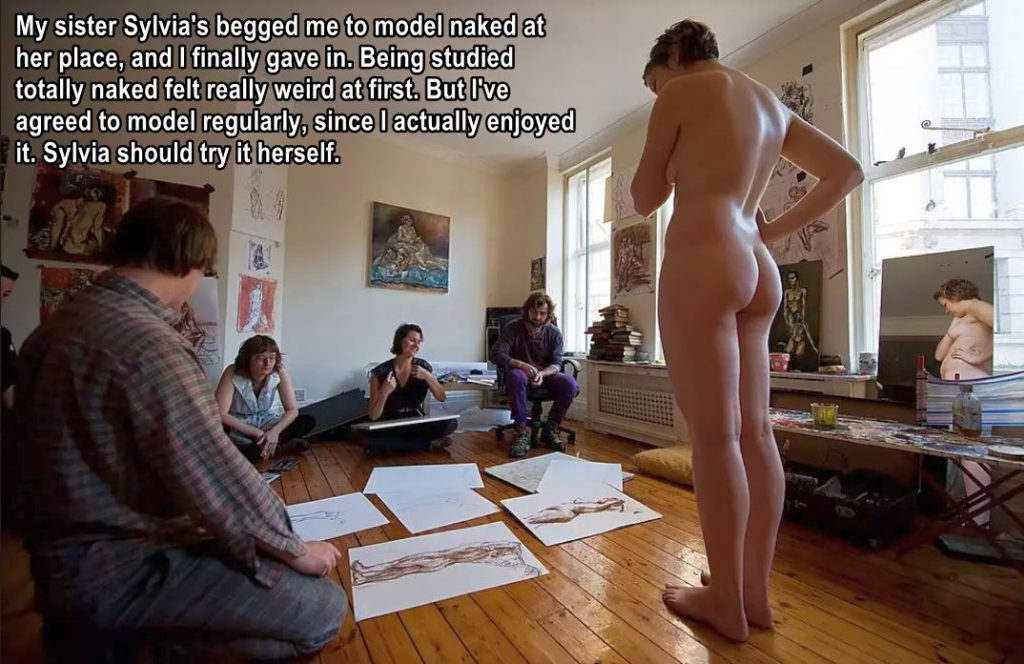
One problem for many who may be interested in posing nude as a life model is finding a class that’s looking for models. Anywhere that art classes are offered is a possibility. That includes college and junior college art classes, places offering adult education classes, and sometimes classes at art museums. Two related articles (here and here) describe what’s involved in modeling. It’s noted that the average pay for modeling is about $25 per hour, but that probably assumes at least some modeling experience. However, for anyone who wouldn’t mind working naked, the pay could be a secondary matter.
Such things understandably appeal especially to younger people more than visits to established naturist parks and resorts. The U.S. is desperately in need of young people like Brendan to revitalize naturism in this country. Many young people resist being labeled or regarding their activities as part of a “lifestyle”, and so the idea to just “Get Naked” may have more appeal. (Here’s a similar article on GNA.)
But other things are possible beyond naturist ghettos. There are World Naked Bike Rides and celebrating World Naked Gardening Day (usually outside the proclaimed week). There’s always naked hiking – anywhere you probably won’t be seen by textiles. And, finally, there are nude cruises – if you can afford them and book far enough in advance. No mention, however, of life modeling or simply having a clothing-optional party for friends in your own home. All-in-all, this isn’t quite Get Naked Australia stuff.
Max makes healthy living in general a priority. In particular, that means “plant-based cooking”. But she also advocates body positivity and nakedness. She argues that food should not only be prepared while nude, but also served and eaten while clothesfree. Max hosts dinner parties for friends while nude herself (with clothing presumably being optional for guests). “Finding comfort, support and acceptance in being nude around my friends allowed me to feel confident in my body,” she avers. Naturists certainly can understand and agree with that.
The article’s not long, so just read it for the details. People, of course, should already know about things like using sunscreen and what hazards may exist in specific places. Such information applies to swimming anywhere, from a private pool to a popular ocean beach. There probably should be more advice about good naturist and nude beach etiquette. But mainly the information is about why skinny dipping is such a great pleasure – although naturists can make many good points from their own experience, even if they seldom skinny dip.
The present article, which asks how it changed the podcasters’ lives, appeared 4 months after the last episode. Both Kat and Jenny feel that “doing the series for the past few years has helped them and their own body image.” Kat observed that “you don’t need to look or act a certain way to love your body – you don’t need to be a certain size to be happy.” So here again is a message about body acceptance. Naturists simply can’t repeat that enough.
Bonus from earlier: Are you a Naked Person? (3/10/11)
Alden Wicker believes, “Your comfort with nudity says a lot about who you are.” She explains further, “I’m not asking if you’re a nudist, an exhibitionist, or a Playboy model. I’m just asking if you’re comfortable in your nakedness.” In more detail, “I think your view of nakedness says more about you than how conventionally beautiful you are. … I’m not saying naked people are better; they just approach life differently.” So here’s one more affirmation that getting comfortable with ordinary nudity is a dependable facilitator of body acceptance.
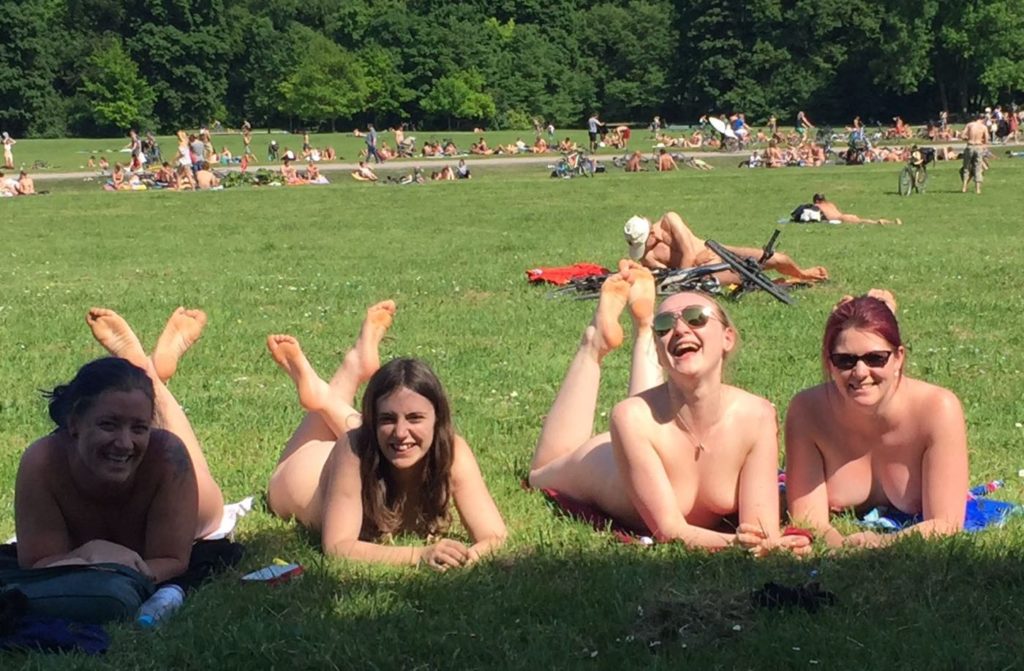
Even if the percentage of Germans who are naked in public parks, beaches, spas, saunas, etc. is, say, 25%, it’s not certain whether the generalization is valid. There’s probably a greater tolerance of public and private nudity in Germany than in almost all other countries, and that’s good. But it’s unclear whether the trend of popularity of and tolerance for public nudity is up or down. The headline of the article is, at best, misleading.
The article itself observes that
“Since East Germany merged with the larger West in 1990 and restrictions lifted in the former communist state, FKK culture has declined. In the 1970s and ‘80s, hundreds of thousands of nudists packed campgrounds, beaches and parks. In 2019, the German Association for Free Body Culture counted only 30,000-plus registered members – many of whom were in their 50s and 60s.”
But the low figure of FKK members is itself misleading. It’s usually possible to enjoy naturism and social nudity without belonging to a large organization. Around the world, the tendency in most types of formal organizations – from scouting groups to fraternal lodges – is that membership has been steadily declining. But membership in a formal organization simply isn’t any more necessary for participating in social nudity than for pastimes such as playing tennis or chess. Most such things are personal lifestyle choices that don’t require membership in an organization – many of which do continue to exist.
Various factors can account for the membership decline. Many of them affect membership organizations in general, not just those related to naturism. There are, however, a few that may specifically affect naturism. For one thing, if there are increasing numbers of people interested in a particular clothing-optional activity, private and pubic businesses such as swimming pools and gymnasiums can satisfy the demand either on a pay-per-use basis, or even by public funding. For instance, a public swimming pool in Spain.
For an example specific to Germany, there are estimated to be about 300 spa/saunas in the country, with nudity expected in most or all of them. There’s one other thing to consider with Germany. The climate simply isn’t as favorable for naturism as in Spain, Croatia, or southern France. Many German naturists probably visit such places as much or maybe more than places in their country. They’re also likely to enjoy social nudity indoors at spas and saunas for much of the year – or in their own homes.
Private naturist parks are much less necessary when nudity is permitted in public parks and other facilities, as well as many outdoor areas (hiking trails, lakes, rivers, etc.). In countries like Spain, Germany, and even England and Ireland, nonsexual nudity is generally legal if it’s not intended to cause alarm or distress to others. So why pay dues to some organization just to enjoy not wearing clothes?
Another factor is that once an activity becomes more popular there’s less need to participate in it covertly in a private organization. The activity is, at least, respectable and tolerated, even if not preferred by a majority.
This suggests that the way forward for naturism in many countries isn’t mainly through large private organizations. Instead, it’s by establishing informal local groups and using them to promote public acceptance of naturism in local areas. The general public will have a better opinion of naturism if it earns favorable publicity and its members are respected local people. Larger national and regional naturist organizations are valuable when they regularly provide various clothesfree activities for their members. British Naturism is a good example.
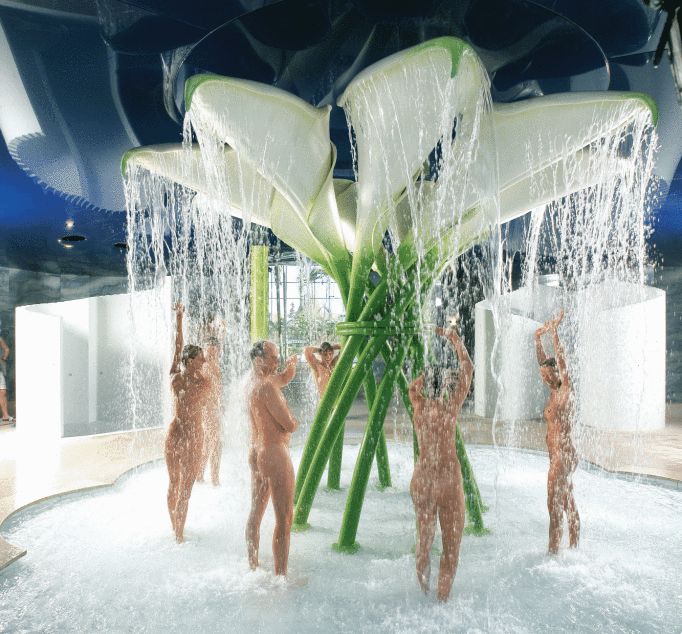
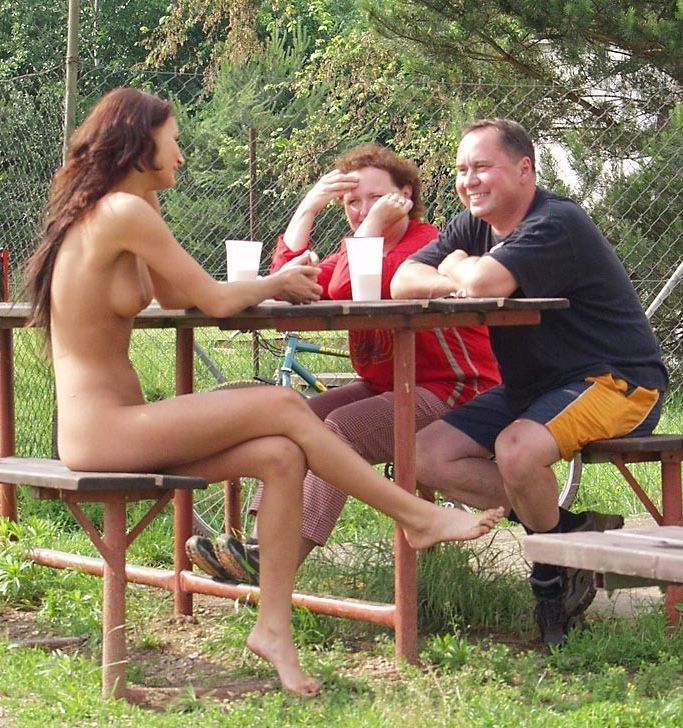
Here’s the short answer. When you tell your family, and they understand, from what you tell them, what’s so good about naturism, they should support you. Some may even start to enjoy being naked themselves. Of course, it’s a problem if they’re not sufficiently open-minded to appreciate your explanations.
When you tell friends you trust to understand your viewpoint, don’t discourage them from telling others they know who will be sympathetic with the idea. Eventually, some of those others will be people who also enjoy being naked, and they can become friends with you.
Another reason to tell people you’re a naturist is that it gives you a chance to explain what naturism really is, what naturists actually do, why naturism is often misunderstood, and why misconceptions about naturism are wrong. Not only does this help improve the understanding of naturism, but it lets you explain why you enjoy it so much.
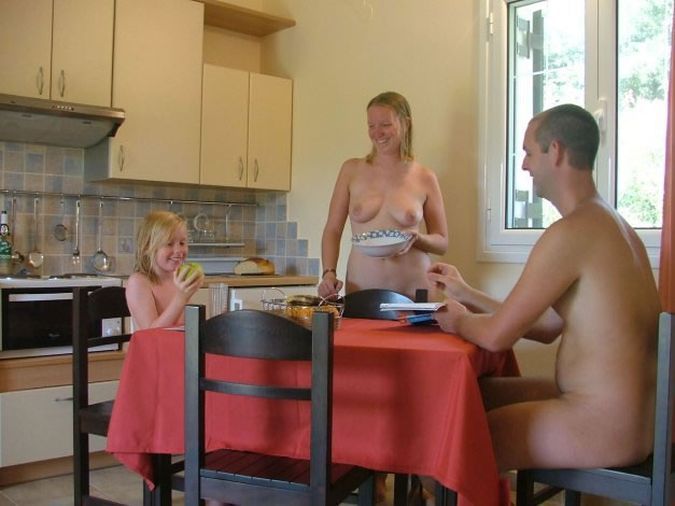
However, naturism is most fulfilling when it can be a regular and normal part of everyday life. Nudity is quite compatible with most things one typically does frequently at home – preparing and eating meals, cleaning and maintaining the home, or just relaxing with music, books, or video entertainment. But being considered a “lifestyle” entails more than that. It’s a set of attitudes and values that the human body is sufficient just as it is, and has no need to be covered in everyday life, except for physical comfort.
Clothing has practical value for keeping the body warm if necessary. But it also has a social function that tempts people to “dress up” to impress others, indicate social affinities, or create a possibly misleading personal image. By eschewing unnecessary clothes, naturists show that they value personal authenticity.
The citied article originally appeared here (in a way that was needlessly difficult to read).
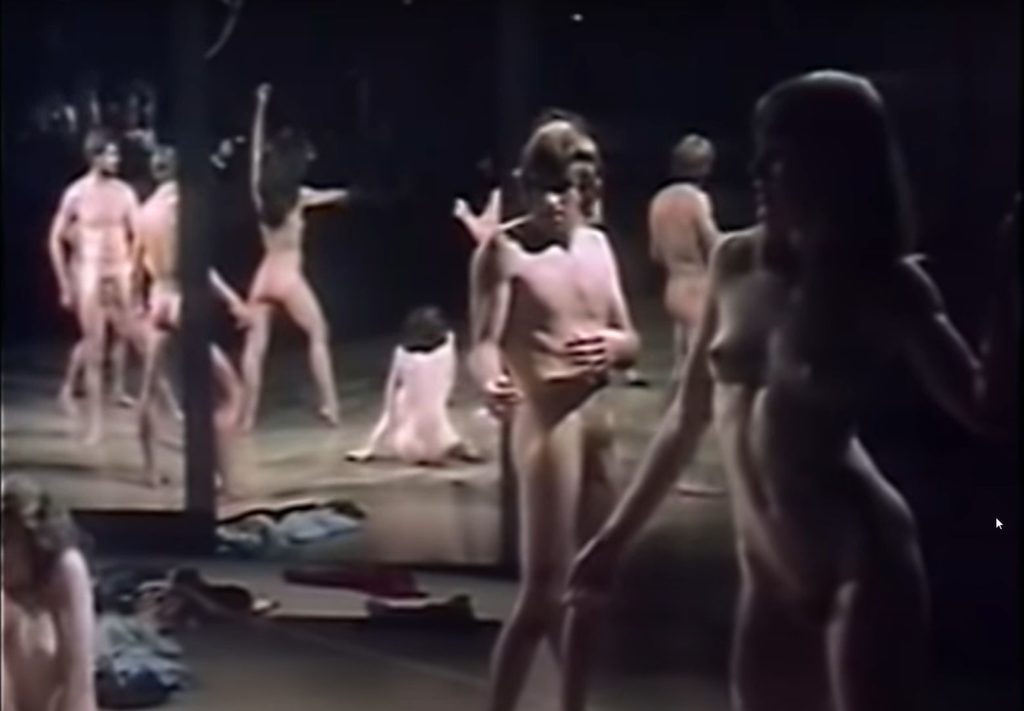
I was fortunate to have attended several performances in New York and London. So what I can say about the show is based on actually having seen it, not merely read about it. As one of the actors, Linda Marlowe, is quoted in the cited article saying, “society has moved on and no one would accept a lot of it now. I’ve always considered myself a feminist but at the time I think we found the material less of a problem than we would now.” She also notes that the scripts were entirely the work of male authors, some of the sketches involve male fantasies, women are victims in some sketches, and there’s nothing from the LGBT point of view.
Well, sure. We’re talking about something that first appeared 50 years ago. Hairstyles, for example, popular with young males were also different at that time (long sideburns but few beards). Many of the sketches even then were regarded as “campy” – absurdly exaggerated, artificial, or affected in a usually humorous way. Many of them had sexual themes (novice swingers, a song about masturbation). However, some of the dance numbers, such as the closing act (watch here) and “Oh Clarence” were very good.
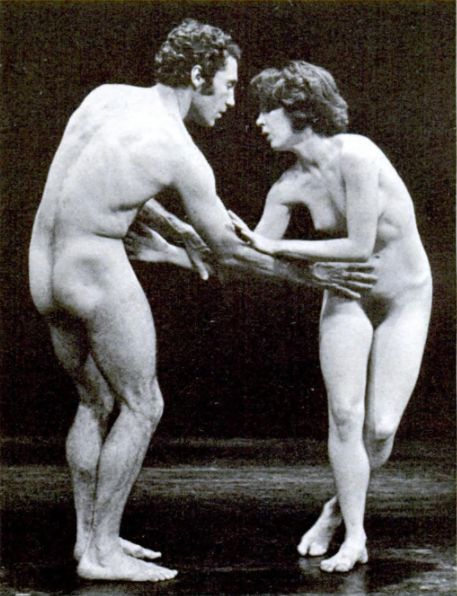
What, then, is the significance of Oh! Calcutta! for naturists today? Paintings and sculptures of nudes had been part of mainstream culture for centuries. Photography of nudes had been also since shortly after cameras were invented. But Oh! Calcutta! made artistic, live, open nudity something that the English-speaking general public could witness – if they chose to. It was an early, tentative step toward the normalization of nudity.
Nowadays live full nudity in public performances of many kinds isn’t exactly common – but neither is it quite rare. There are numerous examples:
A variety of events in which anyone can participate naked – such as World Naked Bike Rides, Bare-to-breakers marathons, public body painting, and the Fremont Solstice Parade – are also offshoots.
A situation where Jaime would be expected to swim nude troubled him. Since he had no experience swimming nude “It brought up a lot of fear, anxiety and worry in me.” Any unfamiliar situation, not just nudity, could have the same effect. After examining the fears and worries he realized they actually did more harm than good. He decided the worries were unfounded and interfered with obtaining something he wanted. So he dismissed them.
This is a good approach that naturists can use to persuade others that embracing nudity in suitable circumstances could be rewarding. As a naturist, by credibly explaining how naturism has enhanced your life, you can argue it’s worth the effort to overcome fears and worries about nudity. So you may gain another person to enjoy nudity with.
Jaime concluded that “if more people were openly naked for example say whilst swimming, sun bathing, in saunas, beaches etc. it would help people have more confidence in themselves and also less bodily anxieties.” And enhanced self-confidence is of value in becoming successful in many other activities besides naturism.
I may do a whole post on the general topic, but the post cited here provides a high-level introduction to the idea. After all, most people know that vigorous exercise is usually good for health. Exercise equipment like treadmills, stationary bikes, rowing machines, etc. has been available for many years. But it’s often neglected after a few months since, candidly, using it is rather boring. Being naked while using it, however, could be an effective solution for that problem. Certainly a good excuse to strip off, if you need one, especially if you sweat heavily.
If you’re interested in this sort of thing and southern California is conveniently located for you, another run, the “Bare Booty 5k Fun Run“, is scheduled for September 26, 2021, at DeAnza Springs Resort.
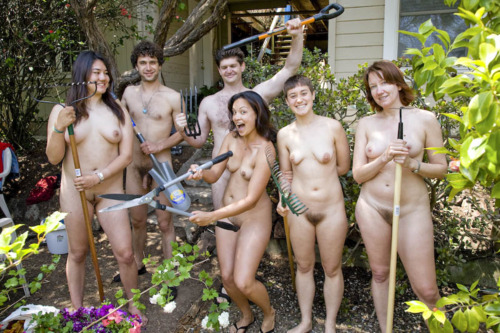
The president of the New Zealand Naturist Federation is quoted in the article making a very important point: “This particular day is more for people who aren’t naturists to get involved and give it a go.” In other words, having a “naked gardening day” isn’t so much aimed at experienced naturists as people in the general public. After all, naturists will do their gardening naked anyway, if possible. But having a special day is a way to make the general public more aware of what naturism is and what naturists actually do.
Since the first WNGD over 15 years ago, many people who’ve read about it or noticed it mentioned in social media may have decided to give naked gardening a try themselves at some convenient time, not just on WNGD – at least if they have a gardening area that’s sufficiently private. People who do that often realize that the experience is quite enjoyable. They may continue gardening naked simply to be able to enjoy the fresh air and sunshine. But they may also be motivated to learn more about naturism and to seek out more traditional naturist activities – even if they don’t actually consider themselves “naturists”.
The bottom line here is that naked gardening can be, for some, a “gateway drug” to serious involvement in naturism. And it’s not the only such “drug”. A number of things, such as practicing naked yoga, naked hiking, or simply starting to sleep naked, can have the same effect.
Of course, for most that’s not the “real world”. But it should be, so isn’t it worth some effort to change that? The article here lists 6 ways to help nudity become considered a normal, acceptable choice. The most important point is in the conclusion: “The number one way to normalize nudism is to talk about it.” That means you shouldn’t remain secretive about your enjoyment of nudity. All the rest depends on overcoming the secrecy.
The 6 points, with explanations, are:
I’d make a few comments on these points. In general, keep it simple by treating the terms “naturism” and “nudism” as interchangeable, without trying to explain why some might prefer one term over the other.
Here are a few more specifics, in the same order:
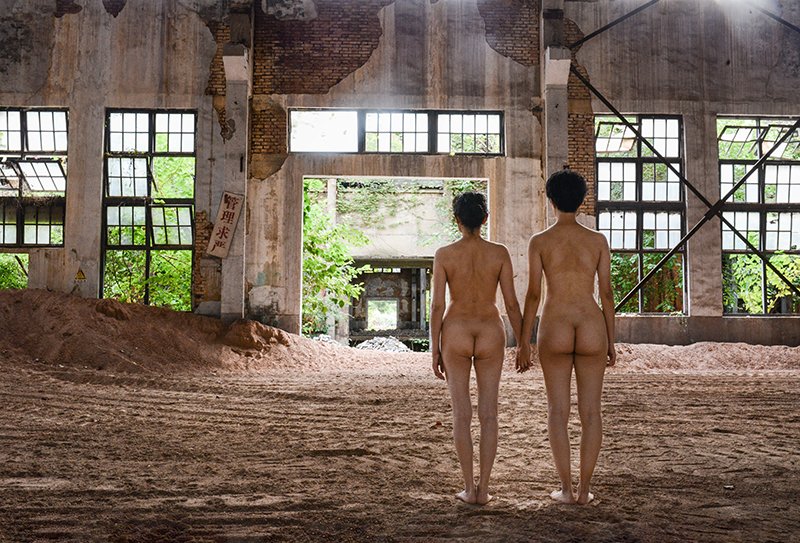
Finding nudity used for artistic purposes is surprising in an authoritarian and rigidly conformist Asian society like China. Genuinely good art is not only esthetically pleasing (usually), but often communicates ideas, emotions, and physical sensations as well. When the art is visual and also involves nudity it not only attracts attention to itself, but also affords the viewer a vicarious experience of the scene in the naked flesh. According to the article, “the project intends to discuss the irresistible force of time with an unexpected, raw, yet beautiful approach.”
It’s tough being a naturist without that trait, no? This isn’t to say there’s anything aberrant about it. Questioning social “norms” is quite healthy, because many don’t exist for good reasons, but only due to arbitrary, haphazard customs. A prime example, especially if you live in an excessively conformist society, is the compulsive “need” to wear clothes when nudity would be more comfortable.
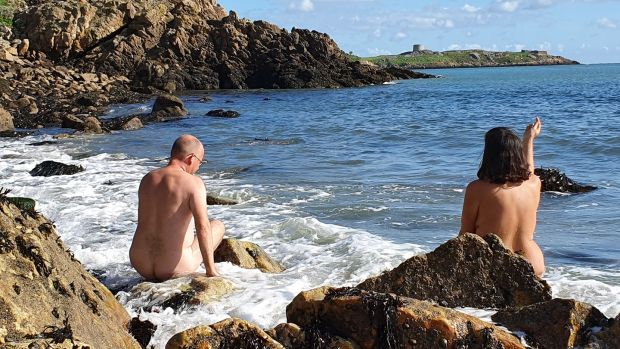
In the article here, a reporter interviews naturists enjoying a class, fully naked, in Qigong on a public Irish beach. Instead of expressing bewildered amazement that normal people would do something like that, the reporter allows the interviewees to describe their feelings and motivations in their own words and at some length.
One perception that comes across is how natural and unexceptionable it can be to engage in an activity like a Qigong class while wearing nothing in a public place with others. One interviewee, artist Ciara Boud, “doesn’t mind being referred to as a naturist, she just sees herself as someone who chooses to ‘wear or not wear what she wants to’.” Ciara remarked further:
“Bodies are quite boring, … Once they’ve been out on display for a little while, you’re like, ‘that’s a t*t and that’s an ass’, and nobody cares and nobody’s looking, and nobody is even thinking of your body in a broken down structure of ‘those are the sexual bits and those are not’.”
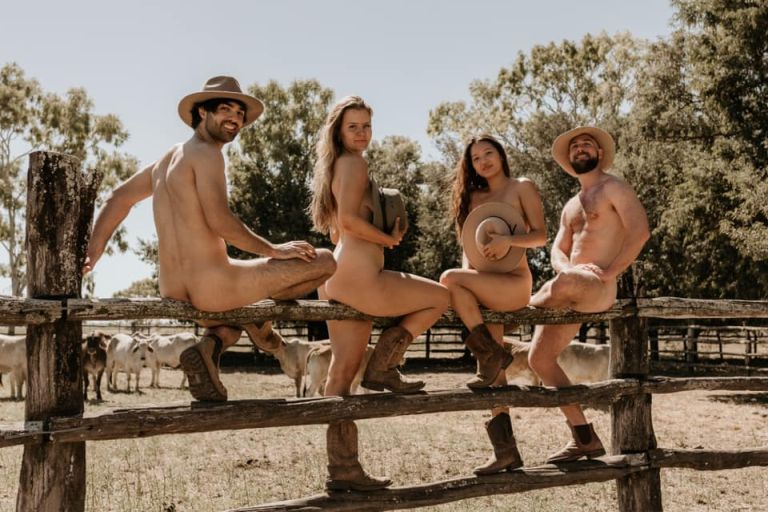
It’s also been a popular idea in Australia, as in the present example. In this case, students of the University of Sydney’s Doctor of Veterinary Medicine school have been producing such calendars annually in “a decade-long, charitable tradition”. Although the 2021 calendar is no longer available, the calendar’s website, called bumsforthebush, has pictures and a video documenting the project.
The tradition has been carried on by students at other veterinary schools in Australia, notably at North Queensland’s James Cook University – reported here, here, and here. The website for this effort is called Vets Uncovered and there are some YouTube videos.
One has to wonder: Why hasn’t this idea spread to vet schools in the U. S.? (But it’s probably because the U. S. is decades behind in appreciating the cultural value of non-sexual nudity.)
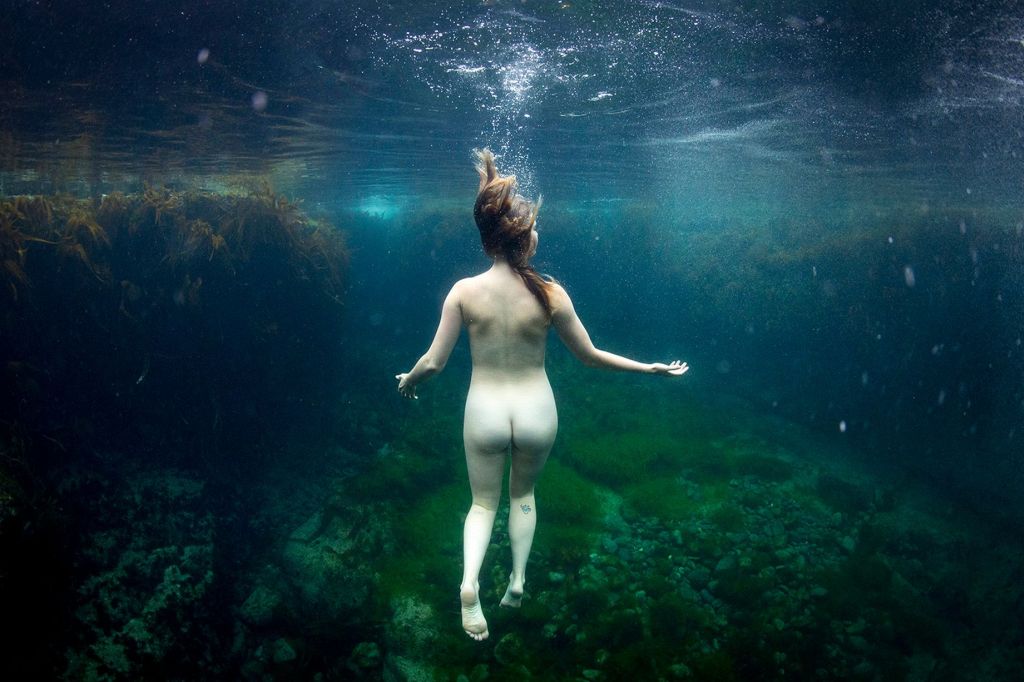
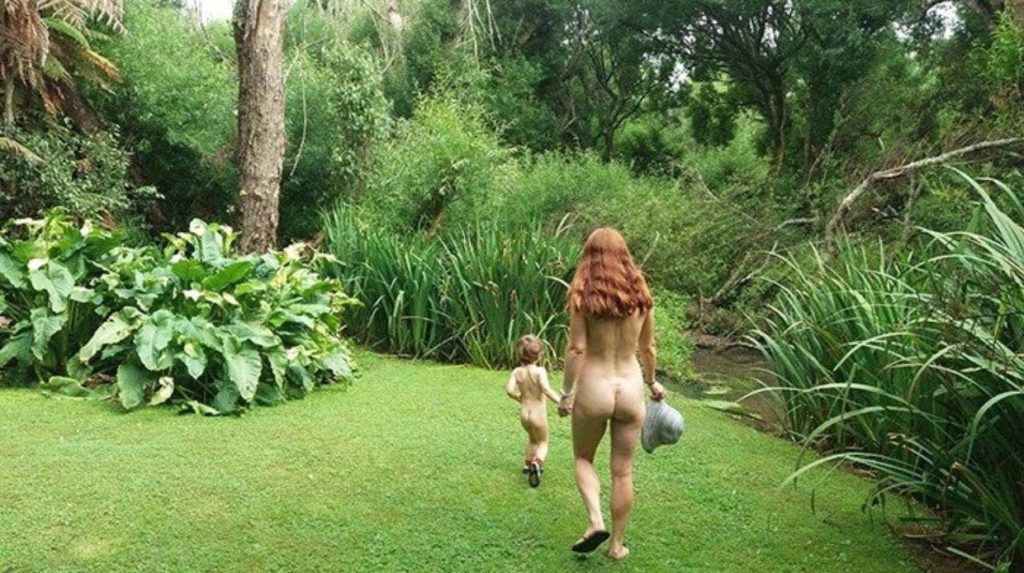
Recently, I offered some comments here on this article: Searching for the Threads of a Family Naturist Network about the fact that rather few U. S. families bring their children to naturist parks and resorts – especially compared to the situation in Europe. In order for this to change for the better, it will probably be necessary for nudity to become normal and routine in more homes. The article Eight Things to Know About Nudity and Your Family, (from Psychology Today) was recommended to support this view.
Here are some earlier articles discussing similar issues:
As you’ll see further down, the opinions regarding children and nudity of deeply ignorant people who know nothing about naturism, even in England, can be a major problem.
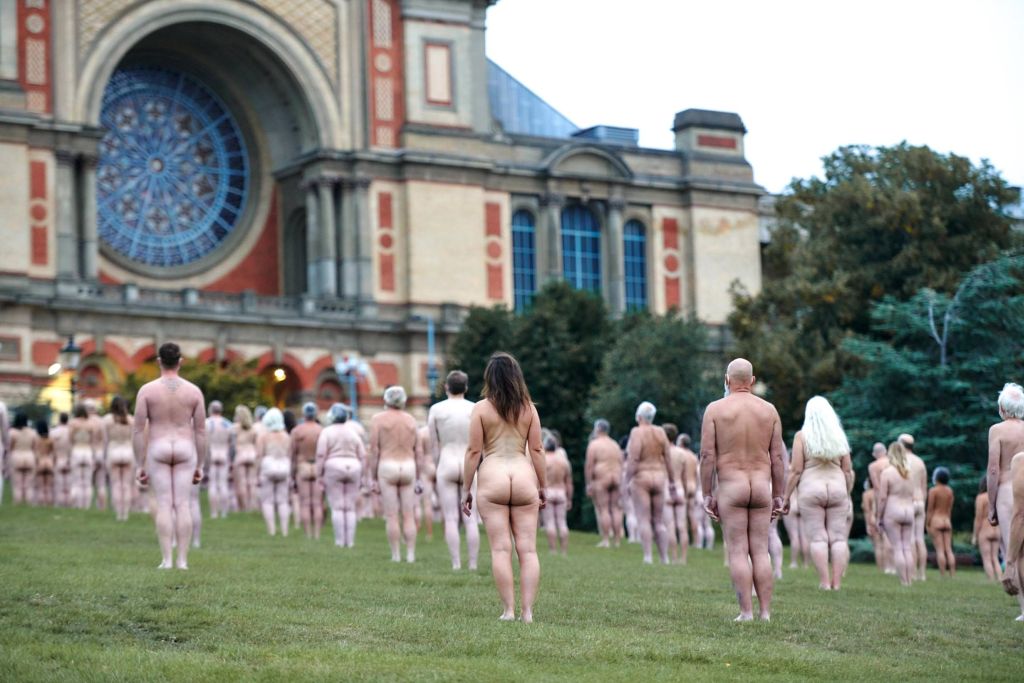
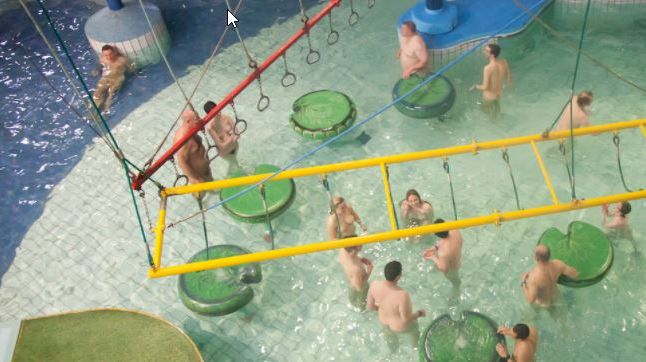
On September 26 the event went on as scheduled. Unfortunately, threats of harm to their business were made to the owners of Waterworld by the protesters before the event and during an unruly mob protest outside the event itself. So the owners decided that in the future children under 18 will not be allowed to attend future naturist events, as described in the following articles.
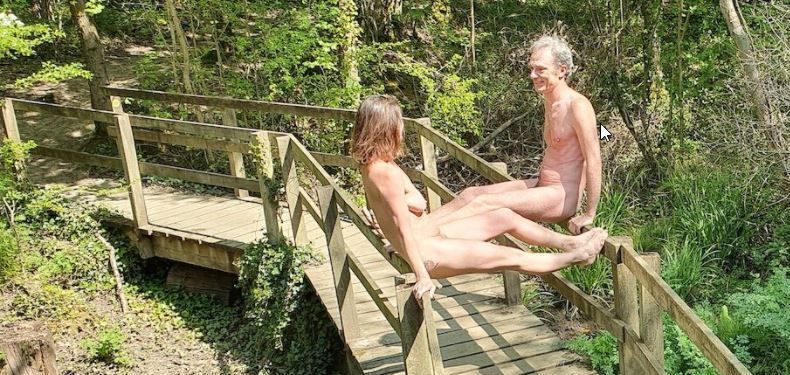

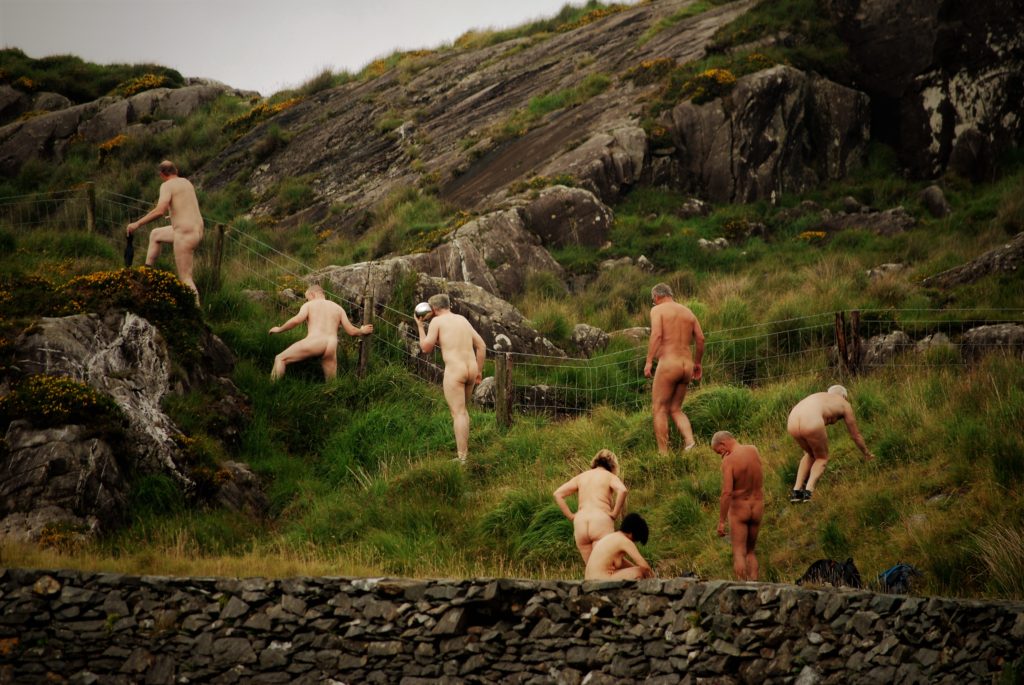
For previous recent reports on naturism in Ireland, see here, here, and here.
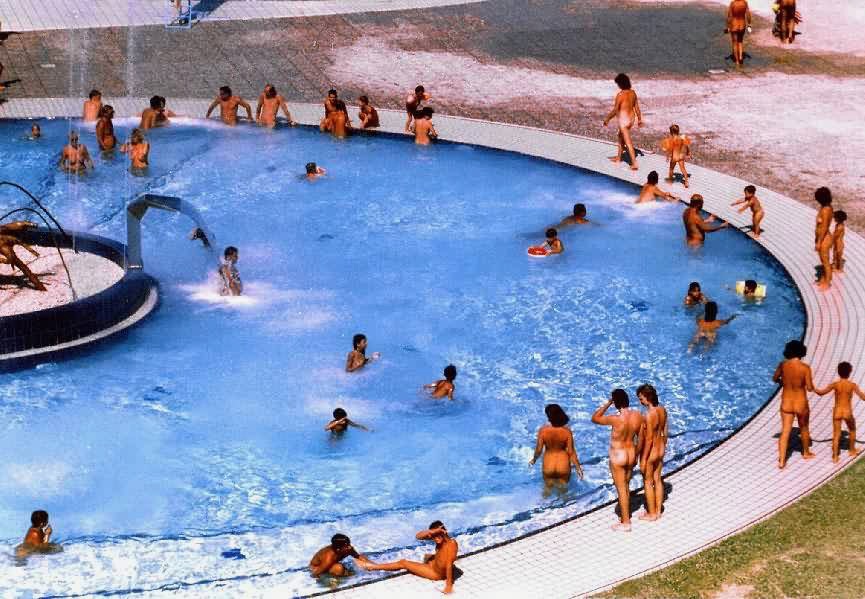
There are observable facts that provide some answers. But underlying that, a significant part of the problem is in the attitudes and value system of most people in the U. S. – which is decidedly slanted to assume that children and naturism should not mix, and needs to move toward
“A value system with less paranoia about breast-feeding and nudity on TV. A value system that allows the average worker more than five vacation days a year. A value system where people don’t freak out when talking to their children about nudity and sex, and use real words like penis, breast, and vagina instead of amassing so much anatomy into the mysterious region of “private parts.””
The first way that values in the U. S. need to change is for nudity to become normal and routine in more homes. It’s not necessary for family members to be naked much of the time, but nudity shouldn’t be discouraged either. Let everyone enjoy being naked as much as is practical and comfortable for them. Children shouldn’t get the idea that certain body parts must be covered at all times. Until home nudity is normalized, naturism will continue to be crippled.
Beyond that, the value system in general should renounce the mistaken idea that nudity must not be allowed where children might see it – especially in the most popular and widely-used social media. Never mind that almost any 10-year old can easily find raunchy porn. That, of course, is how they’re likely to satisfy their sexual curiosity, given that many U. S. states don’t allow sex ed in public schools unless it’s of the mostly useless and abstinence-only sort. How could tolerance of nudity at home and visits to naturist places not be a healthy way for parents to answer their kids’ questions about the “facts of life”?
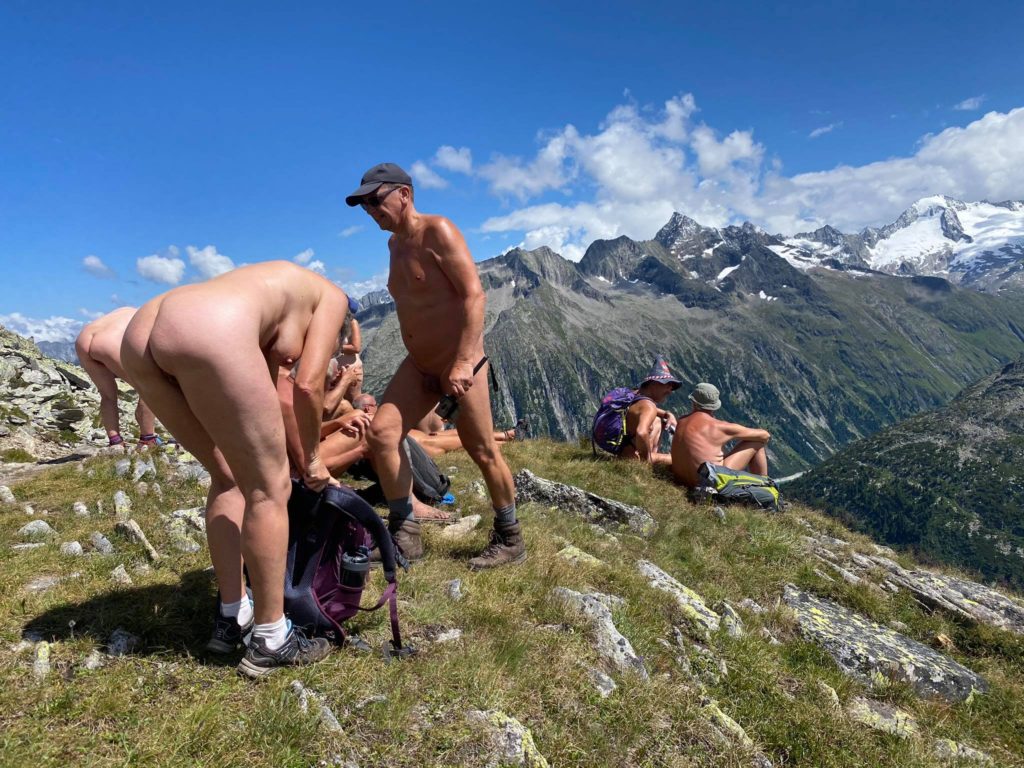
The tours were the idea of Richard Foley, editor/author of the excellent book Naked Hiking and creator of the Naktiv website. Extensive text and photographic records of previous NEWT events can be found on the NEWT page.
The report of the 2020 event (in the link above) relates that 30 men and 10 women participated. Their nationalities were mostly European: Irish, English, French, German, Dutch, Swiss, and Slovakian. The weather was mixed, with the first two days being too wet for hiking. Although the third day was dry, it was cold, so only an hour and a half was suitable for naked hiking. The last two days, however, were good for clothesfree hiking. The hikes involved as much as 10 miles of walking and elevation gains of up to 2300 feet, so being naked helped avoid overheating. Many members of the general public were encountered during the hikes, yet they “in general paid no attention to the fact that the forty of us were naked.” U. S. naturist should be very envious.
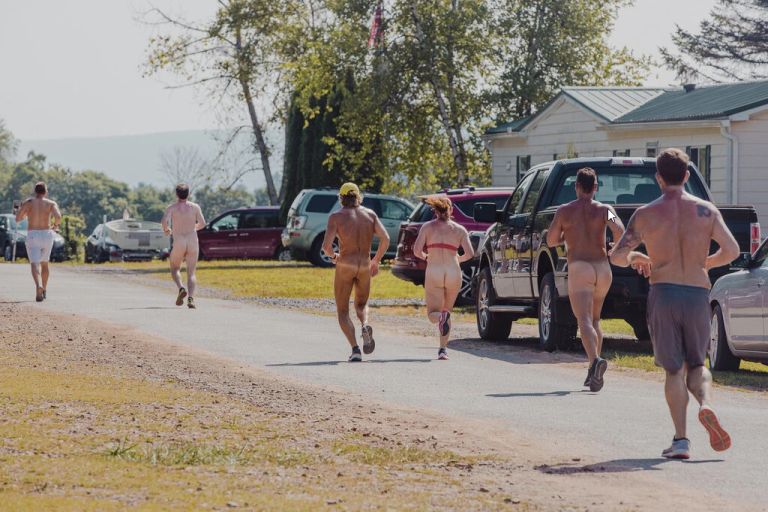
Nevertheless, she enjoyed the race, and in fact she finished “good enough for fifth place in my category. My award: a medal that I wore at [sic] around my neck with nothing but my sandals, bandanna and a fresh coating of sun block.” As far as the nudity of others was concerned, “With a full view of their entire, naked forms in motion, I felt appreciation, in the same way I’d look at a nice painting.”

In Sanskrit, yoga practiced devoid of clothing is termed Nagna Yoga. “Nagna” is a cognate (i. e, born from the same source) of the English “naked”. This ancient concept is referred to by very similar words in other (northern) Indo-European languages like Swedish (naken), German (nackt), and Polish (nagi).
Luna writes:
“In our practice, we start with an “unmasking ceremony”. In the “Unmasking Ceremony”, we remove our clothing in two parts as in layers to unveil the third mask of ours, (the TRUE SELF). We use the clothing as a symbol of the masks we place on ourselves to function with our responsibilities in the different circles we participate in. This ceremony allows you to go through a transition to alleviate any anxieties one may have to practicing Nagna Yoga. Stripping ourselves from the clothing allows us to uncover the masks so we may discover who we truly are.”
This is an excellent statement of the philosophical grounding of naturism. It’s not entirely about the world of “nature” – of which humans are a part – but also about the essential “nature” of every person, which isn’t obscured, disguised, or concealed beneath extraneous, “unnatural” clothing. For naturists, you are most yourself when you dispense entirely with clothes.
However, in fact, most benefits of nakedness that are cited often apply just as much to men as to women. Many men have body acceptance issues. And they’re also fully able to appreciate the many psychological benefits of wearing nothing that are mentioned by the women here.
Victoria Vantage is a naturist and registered nurse. She says she discovered naturism when she volunteered to model nude for a life drawing class while at her university. In addition to continuing to model for art classes, she has made nudity a significant part of her life – doing “most household tasks naked” and also hiking and bicycling “in the buff”.
And why not? Being naked when doing chores makes them feel less tedious – and enhances the enjoyment of more pleasurable activities.
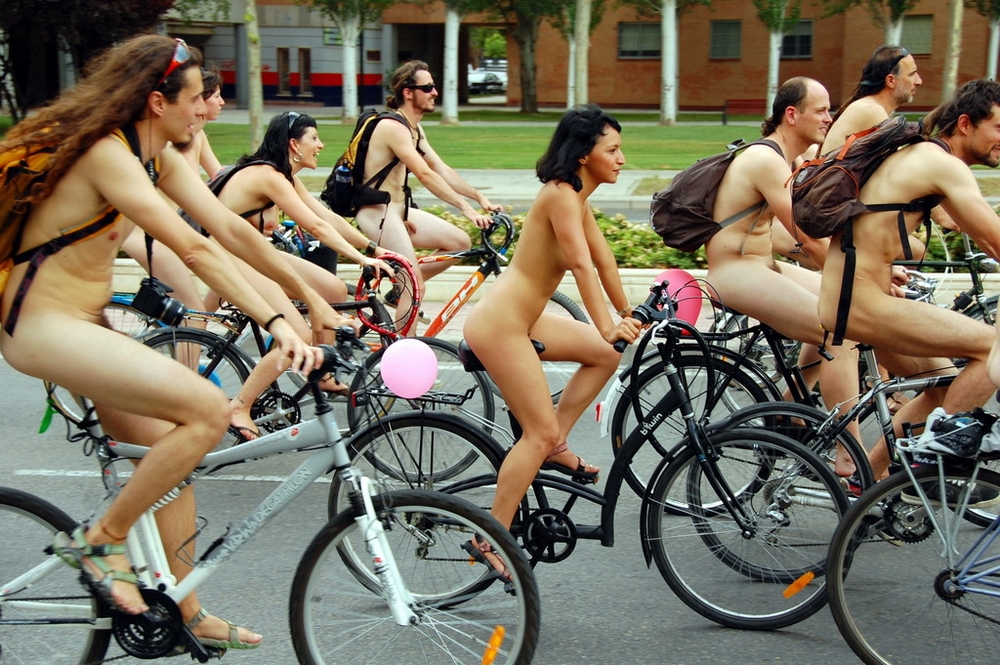
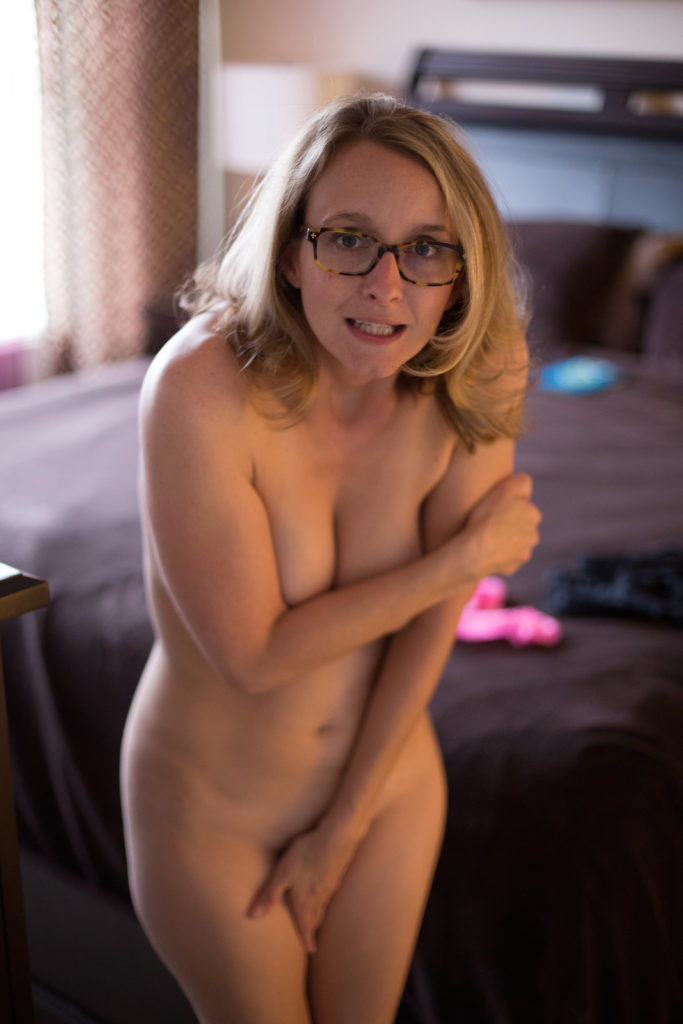
But unexpectedly, “I heard a keycard beep and the door-handle said, click”, and, fully exposed, she saw that “a housekeeper stood in my doorway with her arms full of towels.”
The next day, after plenty of time to process the event, she realized “I’d never questioned my love of private nudity. Since puberty, when my parents fought me to wear a bra, I’ve loved the sensation of my skin against the open air. I also assumed, like me, most people didn’t care about disrobing in secret. We’re all born naked and get nude at least once a day. Is it so strange to enjoy our natural state? The answer is, of course not.”
Evelyn’s eventual conclusion: “Somewhere along the line, society decided nudity is weird, and it became the norm to cover up, even off the record. … I couldn’t find one reason why this rule needed to apply to anyone who doesn’t want to follow it.”
Here’s the thing: There are lots and lots of people like Evelyn. Nudity – at least in private – feels normal to them, and they enjoy it. But they know that “society” thinks it’s an aberration – even though that’s just plain wrong. Almost everyone like Evelyn is only a short step away from deciding that naturism is for them. All they need is for someone to come along and welcome them into the fold.
If you’re a lot like Evelyn, but don’t yet consider yourself a naturist, why not? This is your invitation. (Perhaps this blog post will address some of your concerns.)
If you’re a naturist, there’s much to like about the idea of retiring to a naturist community, besides having a smaller, more easily maintained home to live in. Here are some other obvious advantages:
Are there downsides? Well, if you’re lucky, there may be a good naturist community even closer to where you have family and friends. But more likely you won’t be living as close to family and friends as you were before. And quite possibly, even if family and friends aren’t too far away, many may be uncomfortable visiting a place full of naked people. On the other hand, they might actually be intrigued by that possibility – and even think seriously about becoming naturists themselves.
Now, what was it I found especially interesting about this article? It’s the fact that the article seems to have appeared last year, but at the end it links to a page that lists many naturist places in the U. S. Unfortunately, that page is quite out of date. How do I know? Because that page is on this blog’s website, but hasn’t been updated in about 14 years. So (I’m sorry to say) it can’t be relied on. I won’t link to it, but if you really want to see it, search on this phrase: “Where to be Naked in the U. S.” There are a number of other places you could look for the informaation, such as this Wikipedia page, or this one from the AANR.
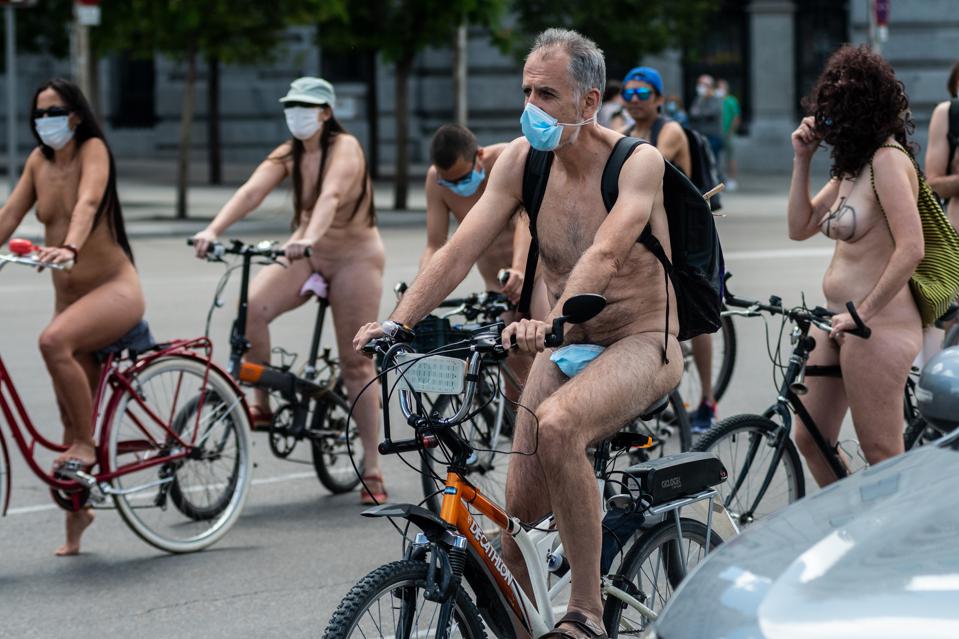
It’s really rather silly, however, to suppose sensible naturists would seriously object to wearing a mask for protection of themselves and others. Most naturists are health-conscious, practical people who wear shoes or sandals to protect their feet when necessary or some sort of actual clothing when cold. Masks are just another example of being prudent. To imply that naturists don’t exercise good judgment is sort of a put-down.
But this article is a good one, and presents a rather positive view of naturism. For one thing, it cites accounts that some naturists organizations have noticed a surge in membership, attributed in part to offerings of online naturist activities using video technology. Just consider the following reports, from Ireland, as examples.
In other countries besides Ireland the national naturist organization reported a notable increase in membership. Here are some reports from England.

“Whether you’re an avid subscriber to the Skinny Dip Club or like to dance around your condo in the nude every once in a while, there’s no denying that there are few things that feel quite as exhilarating as flaunting your birthday suit.”
Other than that, there’s really nothing of special interest to naturists. No doubt the main intention was for the headline and first paragraph to grab readers’ attention. Nevertheless, it’s a good sign that an enthusiastic viewpoint on nudity would have the desired effect.
Exactly why is this good for naturism? There are many reasons why it’s good for all naturists if there are more people who have a naked lifestyle. Friends and relatives of such people will become more used to seeing nudity, and they’ll understand better why it’s enjoyed. Being naked will be considered more “normal” and less crazy or eccentric by the general population. There will be more visitors to naturist parks and resorts, hence more can afford to open and offer a wider variety of facilities. People will feel freer to dispense with some or all clothing in everyday social situations. There will be more pressure for allowing nudity at least in parts of public beaches and parks. Repressive laws against nonsexual nudity in suitable places will be weakened or eliminated. And so on.
The article cited above makes the case that naturists aren’t merely “naked people”, indistinguishable from other naturists. Rather, they are people who value being free of clothes as an important part of their life. An analogy is offered between naturists and people who value practicing yoga or vegetarian eating. But that doesn’t mean being clothesfree, practicing yoga, or abstaining from meat is something that defines them. Each of these interests will occupy different portions of someone’s life. However, the simple fact that someone openly enjoys any of these things tends to “normalize” that interest to everyone who knows the person. Consequently, the interest can become more understandable and acceptable to everyone else.
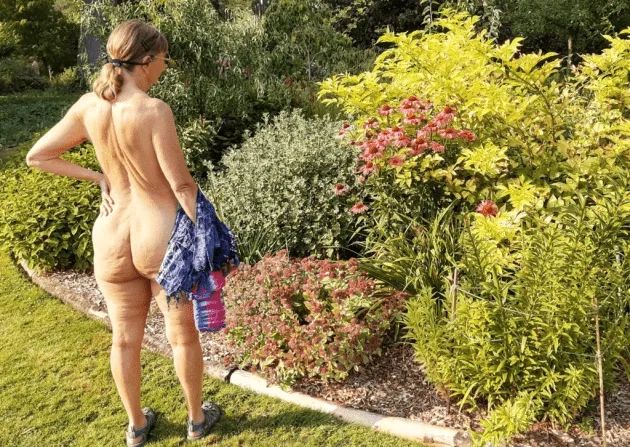
England has many impressive privately-owned gardens, thanks to centuries of wealthy owners of private country estates who devoted part of their leisure time to overseeing the cultivation of stately gardens. Some of these gardens have been open for visits from the public (for a modest fee), and also for private events, such as weddings, parties, and business meetings. A few of these gardens have hosted occasional clothing-optional events for naturists. The Abbey House Gardens is perhaps the best-known of this number.
As noted here, the Fullers Mill Garden hosted an clothing-optional event on the evening of August 9. It was arranged by British Naturism, and a large part of the proceeds from ticket sales was contributed to charity. According to the news article, the event was “hailed as a success”. Sadly, the U. S. has fewer private venues of this sort, since experiencing this kind of splendid garden seems perfect for being enjoyed naked.